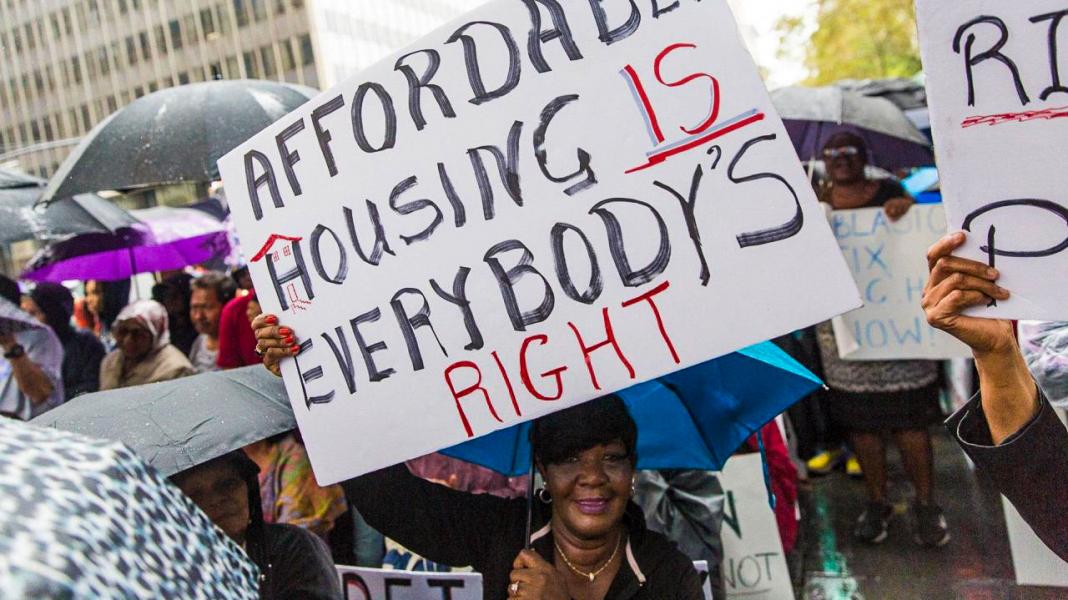The last decade has ushered in an era of unprecedented prosperity in the Puget Sound region. From leading the nation in construction cranes to home prices doubling in just six years and another 11,139 open jobs at Amazon, the Seattle area is booming. What’s also clear is that this prosperity has been far from equal.
In recent years, the cost of living has increased much faster than wages for low and middle-income families at a time when 40 percent of Americans don’t have $400 to cover emergency expenses. This has forced teachers and firefighters to live outside the neighborhoods they serve, accelerated gentrification in communities of color, increased traffic and commute times, and squeezed seniors out of their homes. Worst of all, the rapid rise in rents has caused thousands of our neighbors to become homeless.
No matter what conservative media will tell you, the single biggest cause of homelessness is the lack of available, affordable homes.
As a rule of thumb, a home is considered affordable when the rent or a mortgage and utilities cost less than 30 percent of household income. Unfortunately, the number of affordable places to live simply hasn’t kept up with our explosive population growth. More than 300 people move to Seattle each week, and when developers focus solely on building high-end, $3,000 per month apartments, it’s impossible for low-income Seattleites to live in the city where they work and play. In addition, all levels of government have chronically underfunded mental health and drug treatment services that help people stay in their homes while they get the help they need. To make the issue even worse, Seattle's restrictive zoning laws have limited dense development to a handful of neighborhoods, which artificially drives up the cost of land and the apartments and condos built there.
The homelessness crises, driven by the lack of available, affordable homes has severely strained city, county, and state services. The sad reality is that for every person that caseworkers connect with emergency services and permanent supportive housing, another person starts sleeping in their car, on a friend’s couch, or on the street because they can’t make the rent. Tens of thousands of Puget Sound residents are only one medical emergency, job layoff, or family crisis away from homelessness. And without a safe and healthy home, it’s much more difficult to recover from an injury, address a mental or behavioral health disorder, or apply for a new job. We must fully fund emergency services while also addressing the root cause of homelessness if we’re ever going to break the cycle.
One thing is clear: we need more affordable homes. A LOT more. The Seattle City Council has taken some important steps recently, including allowing taller buildings around transit hubs and pushing for affordable housing at the old Fort Lawton. However, the scale of the challenge means we need to do much more to ensure everyone has a home that’s healthy and safe that they can afford.
The Seattle City Council will vote soon on legislation to allow more homeowners to build backyard cottages, which are officially called Accessory Dwelling Units (ADUs). This is another great, low-impact way to increase the number of affordable homes for family members or renters. In addition, the rental income from backyard cottages can help existing homeowners who are struggling with the cost of living stay in their homes. Will you urge the Seattle City Council to support more backyard cottages?
JULY 1 UPDATE: The Seattle City Council unanimously approved this legislation! You can use the same link to thank them for taking action.
Yes! I'll speak out for affordable homes.
This is the first of a series of email and blog posts addressing the affordable home crisis in our region. Do you have a housing topic you think we should cover? Email us at Homes@FuseWashington.org.
Collin Jergens is the Communications Director at Fuse Washington.

